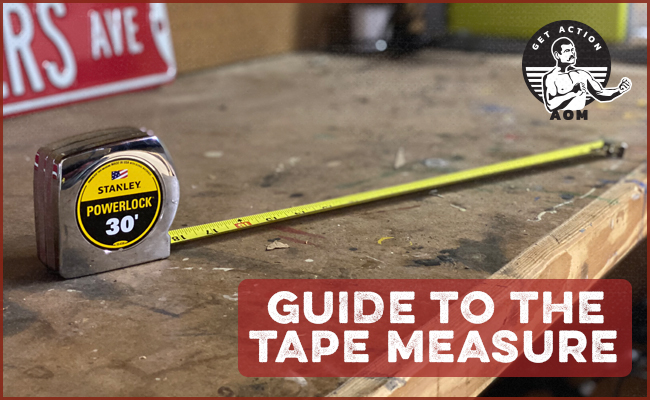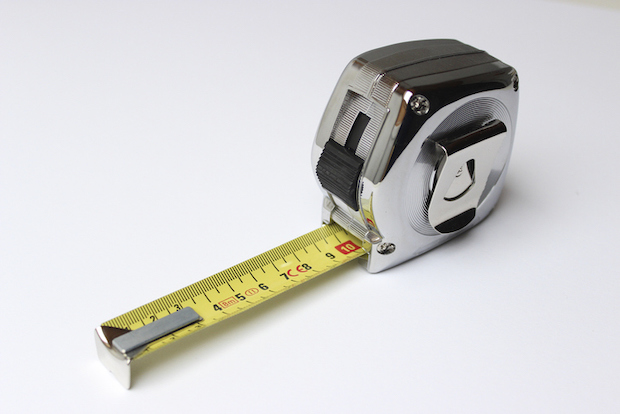
Even if you’re not a master carpenter, you likely have a tape measure on hand. It’s one of the 12 essential tools to keep in your toolbox. I’ve had my trusty Stanley 25 ft. PowerLock Tape Measure for over a decade now, and it seems like not a week goes by that I don’t use it for one thing or another: measuring wood; measuring my kid’s height; measuring the dimensions of a room to see if a certain couch will fit within it.
The tape measure is such an ubiquitous household fixture, you probably haven’t thought all that much about it. But there’s more to this tool than meets the eye. Especially the eye of the untrained amateur.
Below we highlight a few things you might not have known about your tape measure, as well as a few tricks from the pros on how to get even more use out of it.
nswers to Questions About the Tape Measure You Hadn’t Thought to Ask
Why does my tape measure’s hook slide up and down?
You may have noticed that the metal hook at the end of your tape measure slides up and down a bit. No, the hook hasn’t inadvertently come loose. It’s actually made to do this.
The first inch of the tape is short by 1/16 of an inch. Yes, that’s right. The first inch of your tape measure isn’t actually an inch.
The tape’s sliding hook and 1/16-of-an-inch truncation create a simple but ingenious way to ensure you get a “true zero” measurement whether you’re measuring the outside or inside of a surface.
Here’s how it works:

Measuring inside/outside a surface
The metal hook is exactly 1/16 of an inch thick. If you’re measuring the outside of a surface and hook your metal end on the edge, that metal hook will shift out and create a gap that equals the space the hook takes up.
If you need to measure the inside of a surface — like in a window frame or inside a drawer — you want to count the thickness of the metal piece in your calculations. So as you push the tip against something, the hook is included in the measurement.
If this idea seems a little hard to wrap your mind around, this video by Tom Silva from This Old House will help it click.
Take Care of Your Hook — Don’t Let It Slam Into the Case
The slide in the tape measure’s metal hook has been calibrated so that it moves just enough to give you a “true zero” measurement, whether you are measuring inside or outside an object.
But if you don’t take care of your tape measure, that calibration can get thrown off, resulting in inaccurate measurements.
One of the most common ways to ruin the slide on your hook is by letting the tape recoil quickly, resulting in the hook slamming into the tape measure’s case.
To prevent that from happening, as the tape slides back into the case, place your finger in between the case and the hook to stop the tape’s momentum before letting its remainder retract. This is less jarring on the hook and will ensure years of true zero measurements.
If your kids are like mine, not only do they like to play with your tape measure in general, they like to extend the tape all the way out to 25′ and then let it roll back in as quickly as it can. If this didn’t already annoy you, now you have a legitimate reason to tell them to knock it off.
No comments:
Post a Comment